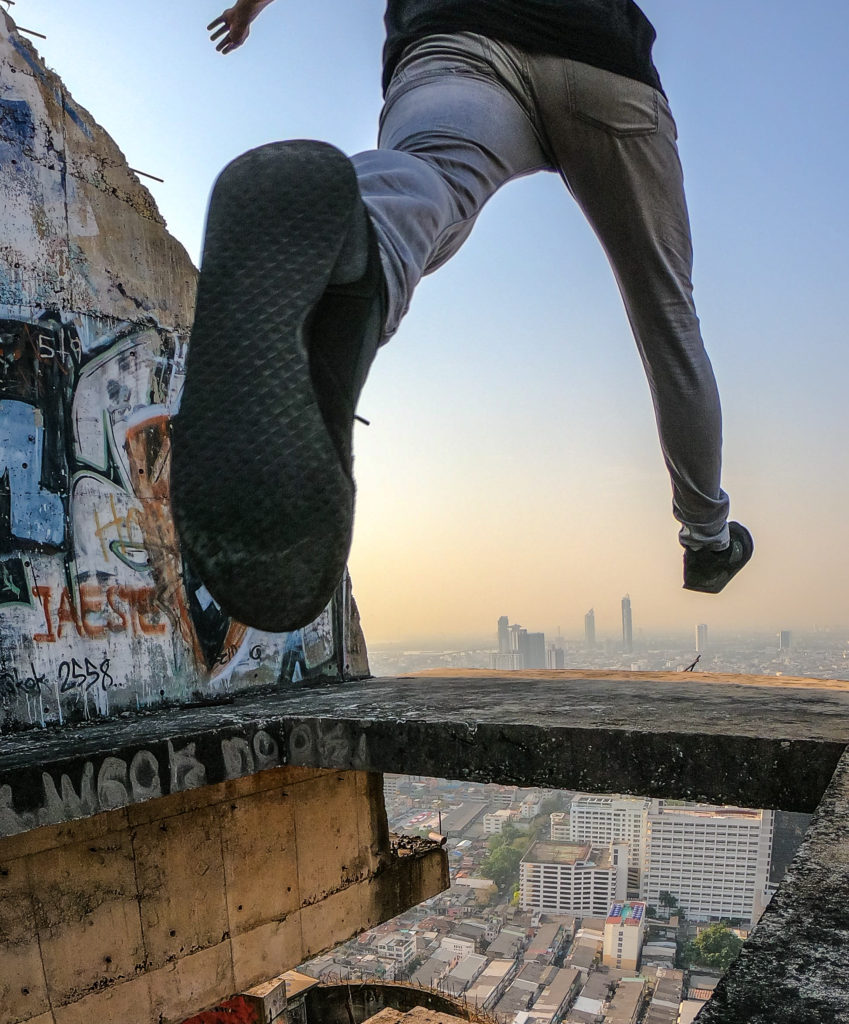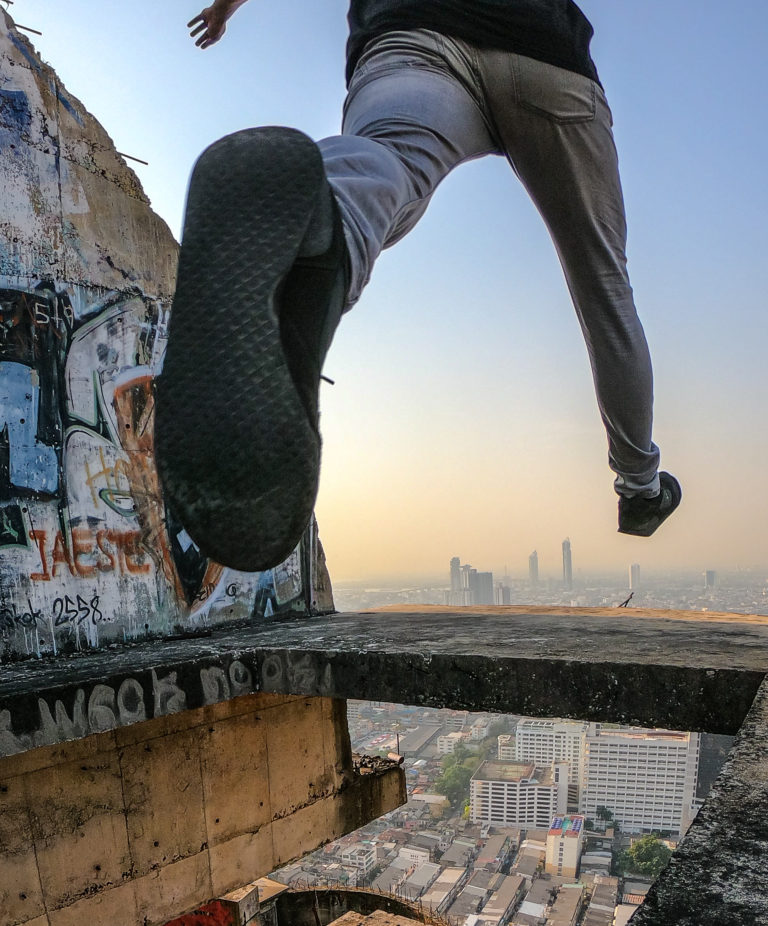When it comes to limits, physics can feel like a restriction. We don’t know what the actual limitations are for the human body because of a simple fact: We’re all different. Unique from body types, gate, mental ability and a huge array of other factors. These differences mean a real template for anyone’s abilities can’t be found. The greatest advantage of this is that our minds are free to search forwards because there is only one way of finding our limits. I mean, how often have you felt that you were doing something beyond your limits, only to find out that it was within your capacities? All because you tried to achieve it in the first place? Also, there is no better way to do field testing for our technique.
How often have you felt that you were doing something beyond your limits, only to find out that it was within your capacities?
Using technique and energy in Parkour is much the same as it is in martial arts. In both there are many practitioners who repeat movements without using energy to the best potential (often referred to as chi or Ki in martial arts). The technique is good or great, they know how to do everything, but the movements remain passive like there is no determined reason for doing them. Energy – or chi – needs intention (yi in martial circles) for it to be used properly and to become active.

Intention is what directs energy, moving with a purpose and engaging muscles ready for the task at hand, because there is a conscious and deliberate focus on a region or set of muscles. The mind-muscle connection theory supports this, it’s been put to the test a lot, and stood up to it. It shows that when an individual trains and focuses on a specific group of muscles, it increases the number of neurons firing, in turn increasing the amount of muscle fibres recruited to contract. This means that with the right intention, contractions have more energy for us to achieve our goals.
Intention is what directs energy, moving with a purpose and engaging muscles ready for the task at hand..
I started to notice a difference from “intent” with some of my climb ups. I decided that I wanted my shoulders to be over the top of the wall. That was the only thing that I wanted, so I focused my intent on it in that moment by concentrating on how I wanted it to feel. There was nothing that got in my way. My mind enabled it. Climb ups have started getting a lot quicker as a result, and since then I’ve seen all sorts of changes in the way that I move. I decided to enable energy in simple yet effective ways. Focusing on what I want to feel through my feet on landing for example. This also promotes better concentration. Tweaking techniques and micromanagement is an art form in itself, one which can lead to more powerful and efficient movement. The more you do it, the more it gets into your muscle memory which means you can focus on more precise elements.
Take a moment to think about this idea, if you do a cat pass/kong precision over a wall (or any vault to a specific landing), and you can’t see the other side, do you focus on the wall that you have to vault or the landing on the other side? These are questions that we should ask ourselves to start thinking about which muscles we want to engage and what elements we want to develop in the moment.
Are we really getting there easier if we’re already thinking about how it will feel?
Are we really getting there easier if we’re already thinking about how it will feel? All that is really required to make a lot of our distances, is to put a bit of focus on keeping the right amount of speed to get to the landing, assuming how it should feel, and then it can be put to the back of the mind. From that point onwards the rest of the focus can be put on the transition of the vault itself being smooth (to maintain the speed), and the movements that the arms are going to do, with how it should feel as a contraction. This, followed by the landing being right. Obviously, this must be started by the physical commitment. This is an example of intent directing energy as I see it. In movement I prefer to use this way of doing things because I feel more in control rather than picking a random speed to charge at things. When you think about it, it’s pretty awesome to get a boost for just being conscious of what we do when we do it.
Here is an interesting article intent in sports:
https://www.stack.com/a/training-with-intent-the-concept-too-many-young-athletes-fail-to-appreciate/
Here is an interesting article on the importance of intent in business:
https://hbr.org/2013/02/the-power-of-intent


